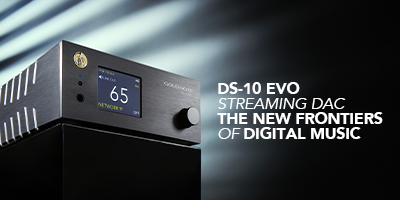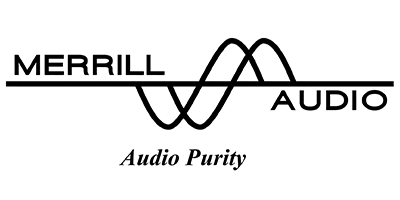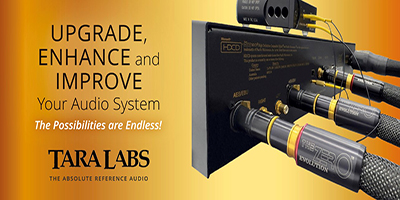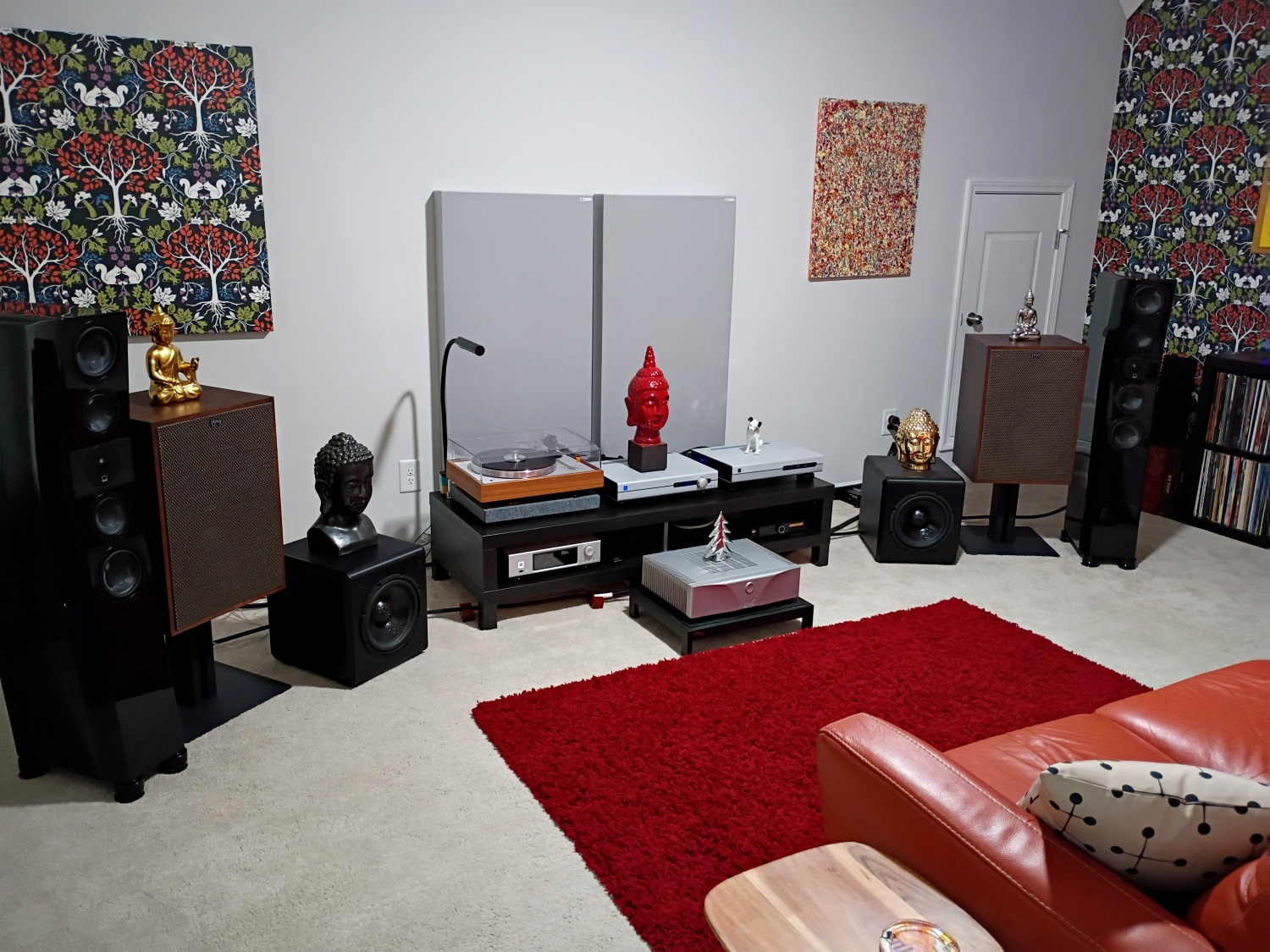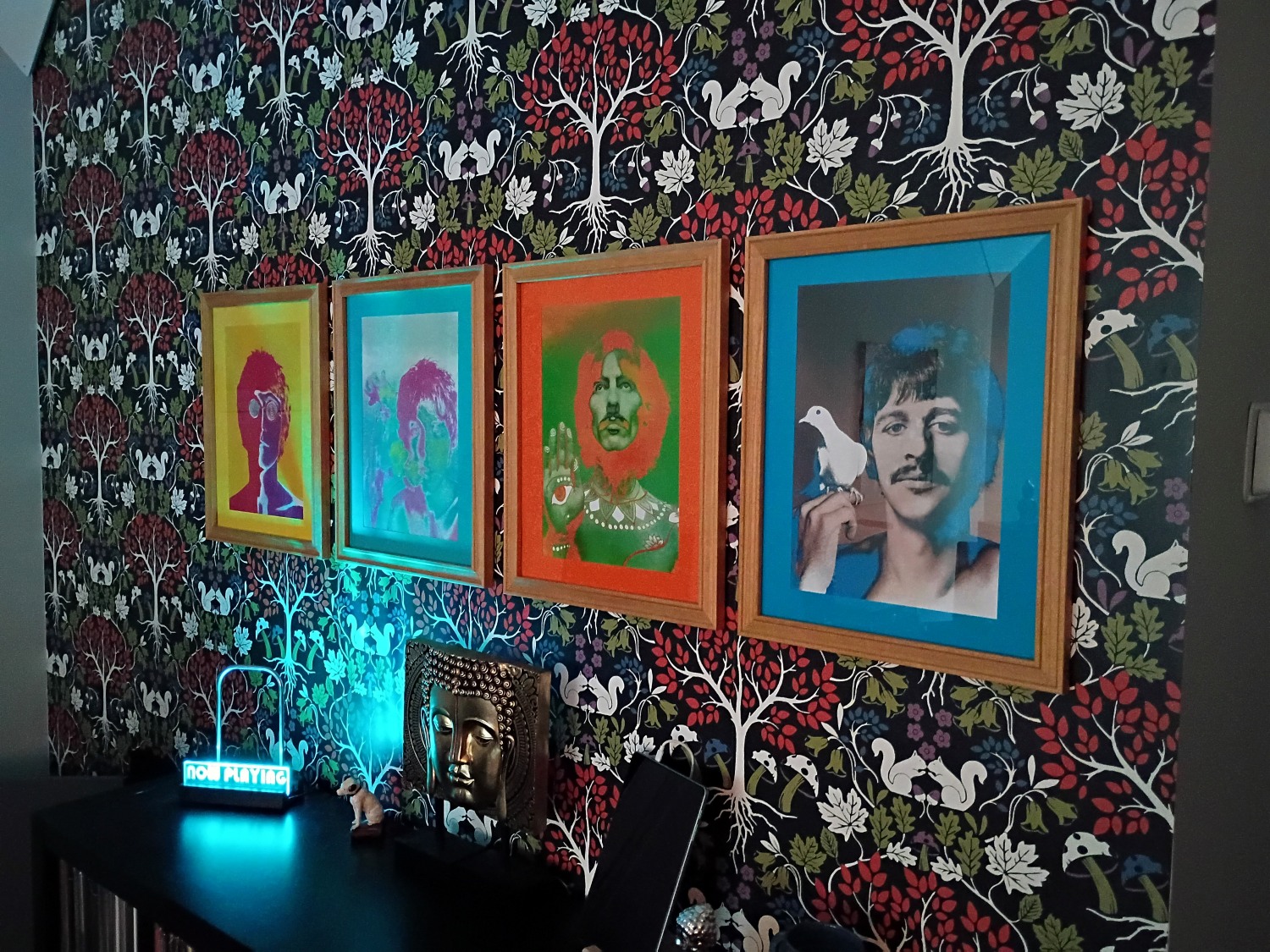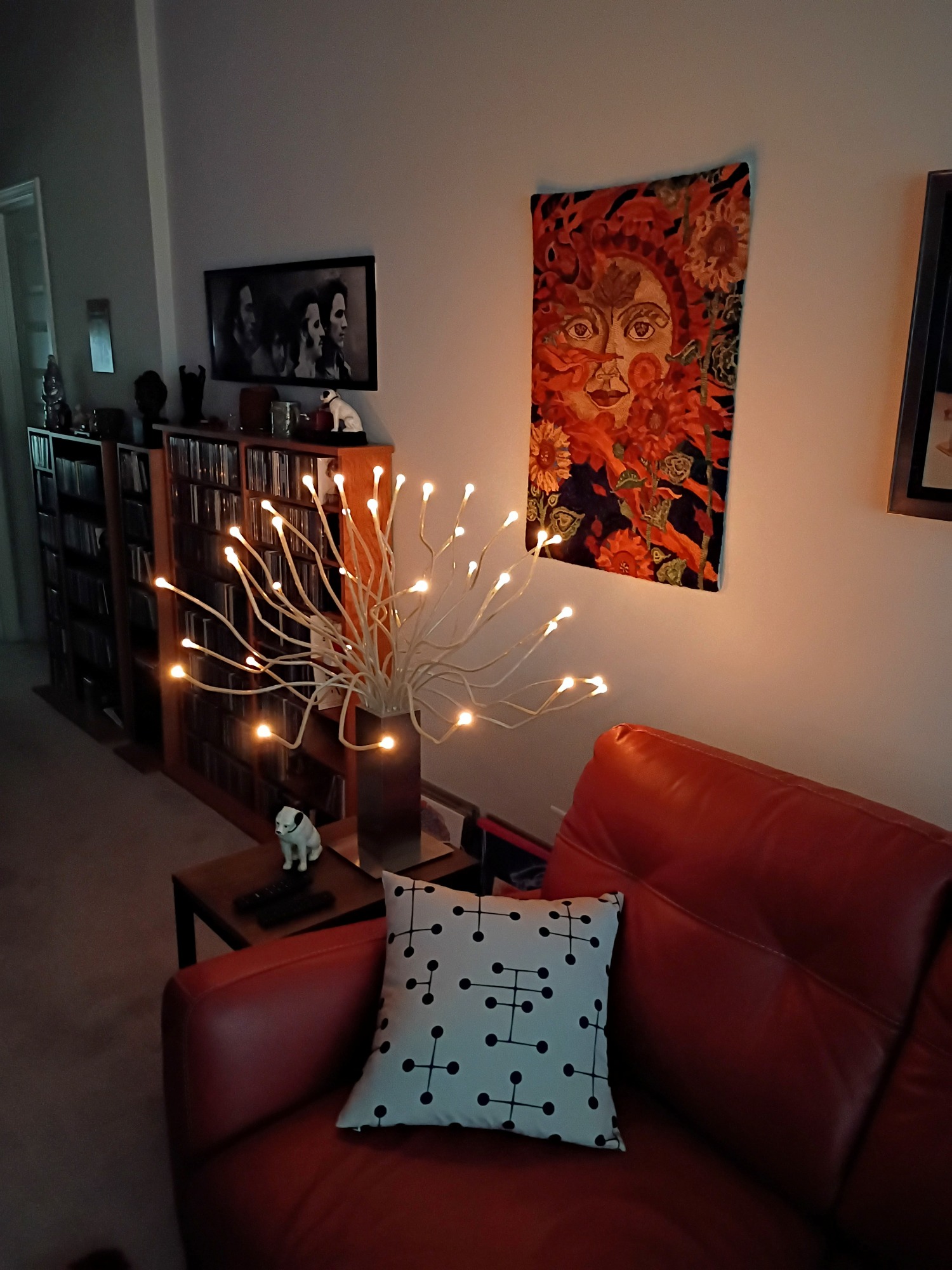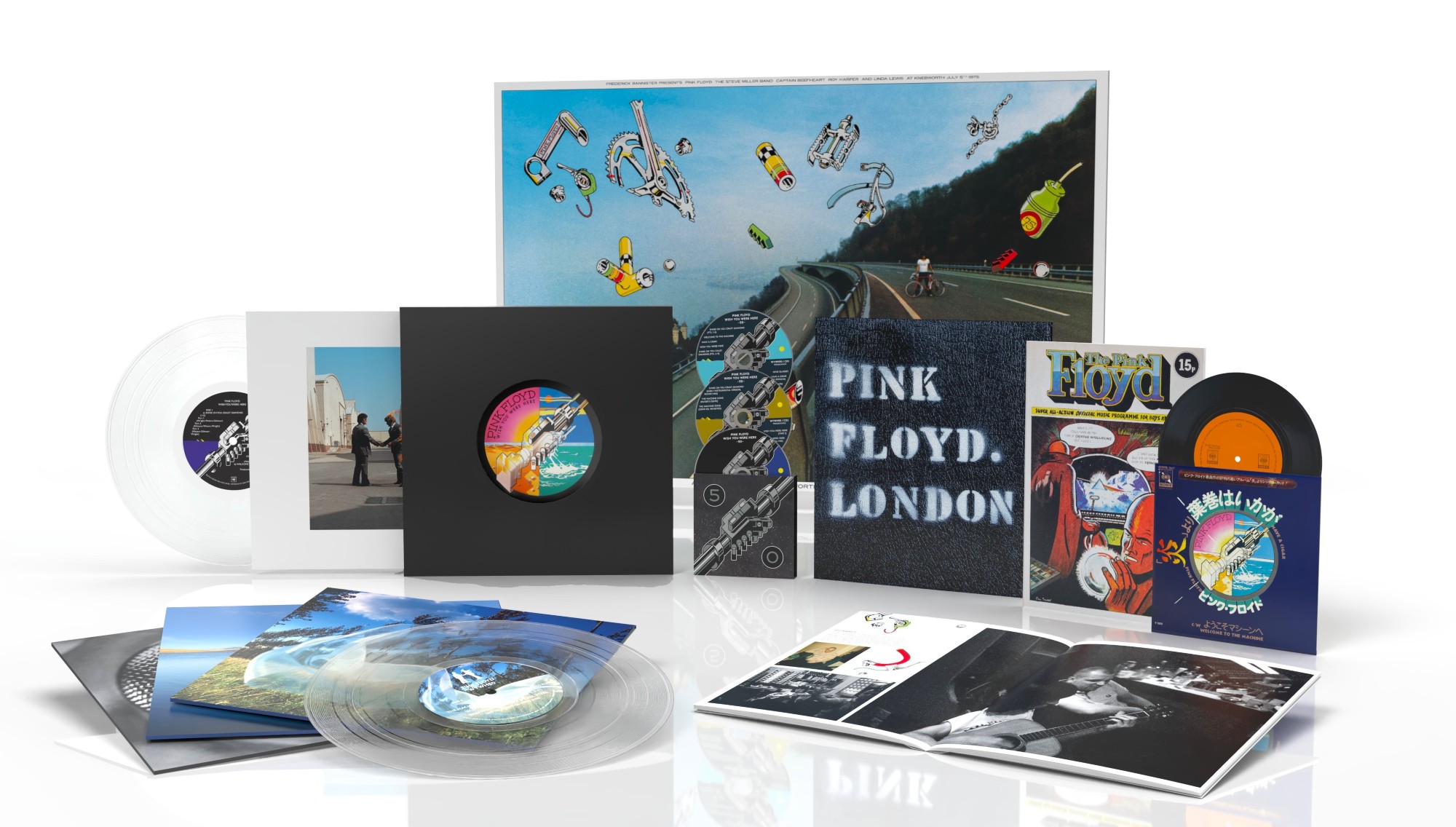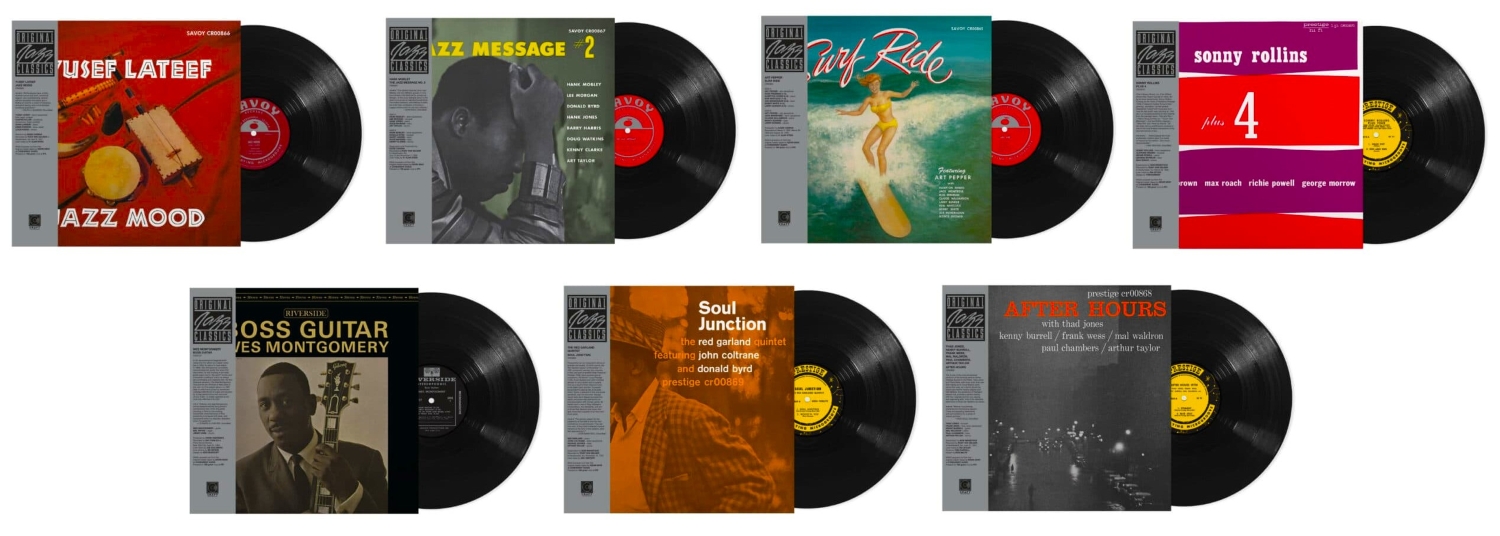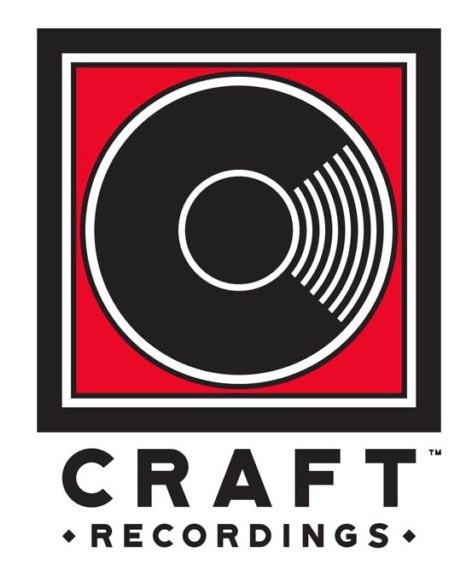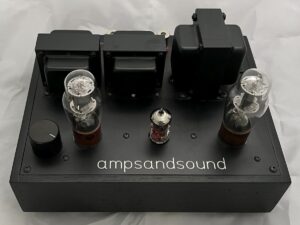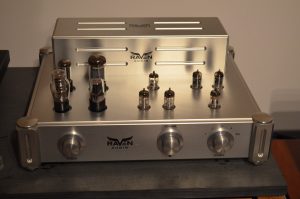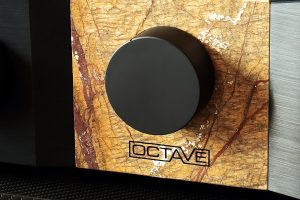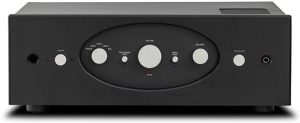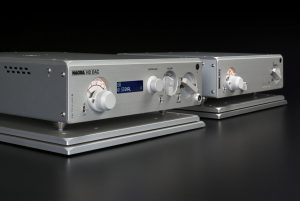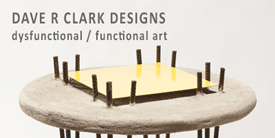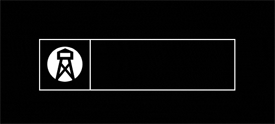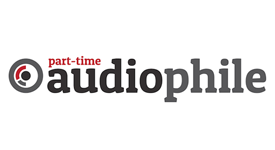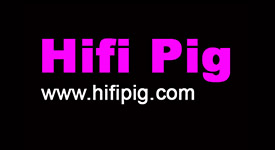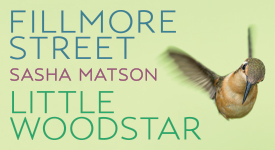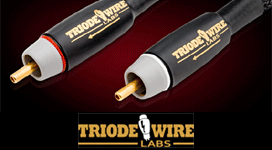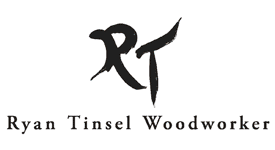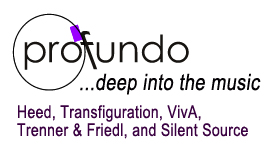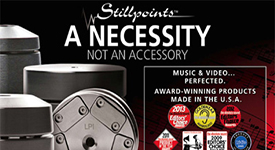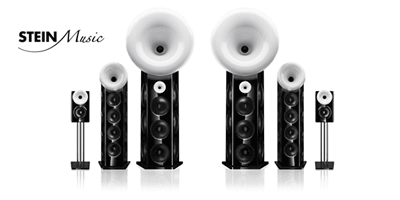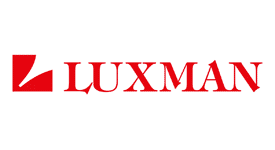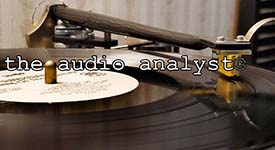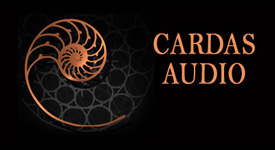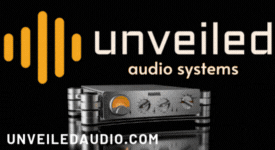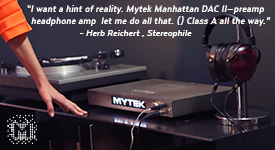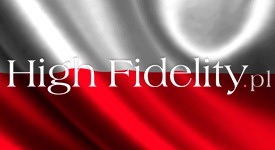FX-Audio L07 Integrated Amplifier and DS07 DAC/Preamplifier - Astonishing Performance at an Entry Level Price!
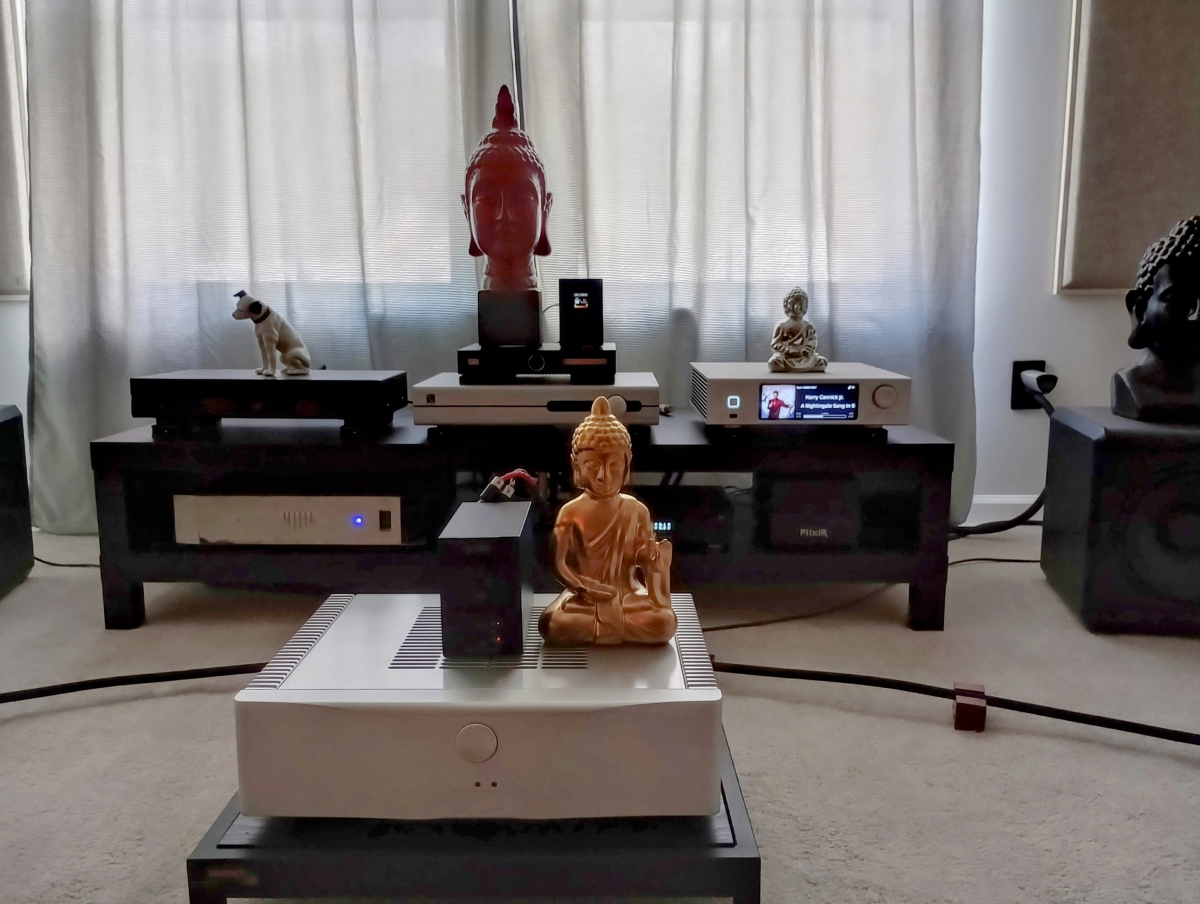
Mark Schifter is constantly teasing me with new product offerings that are either currently under development or on the verge of reaching the marketplace. And more often than not, when I get a notification that something has actually shipped to me for evaluation, I have no idea which exact device is on the way. That was the case most recently, when a pair of new products arrived from a line of inexpensive audio gear Mark is distributing from a company previously unknown to me, FX-Audio, which is a brand of the Feixiang Digital Technology Company in Shenzhen, China. Which apparently—like everything else that falls under Vera-Fi Audio's umbrella—perform at levels far beyond their typically meager price points. The two new devices were the FX-Audio L07 integrated amplifier and the DS07 DAC/preamplifier, and as usual, until I opened the shipping box from UPS, I had no clue what was inside. That said, all of Mark's surprises are almost always quite pleasant!
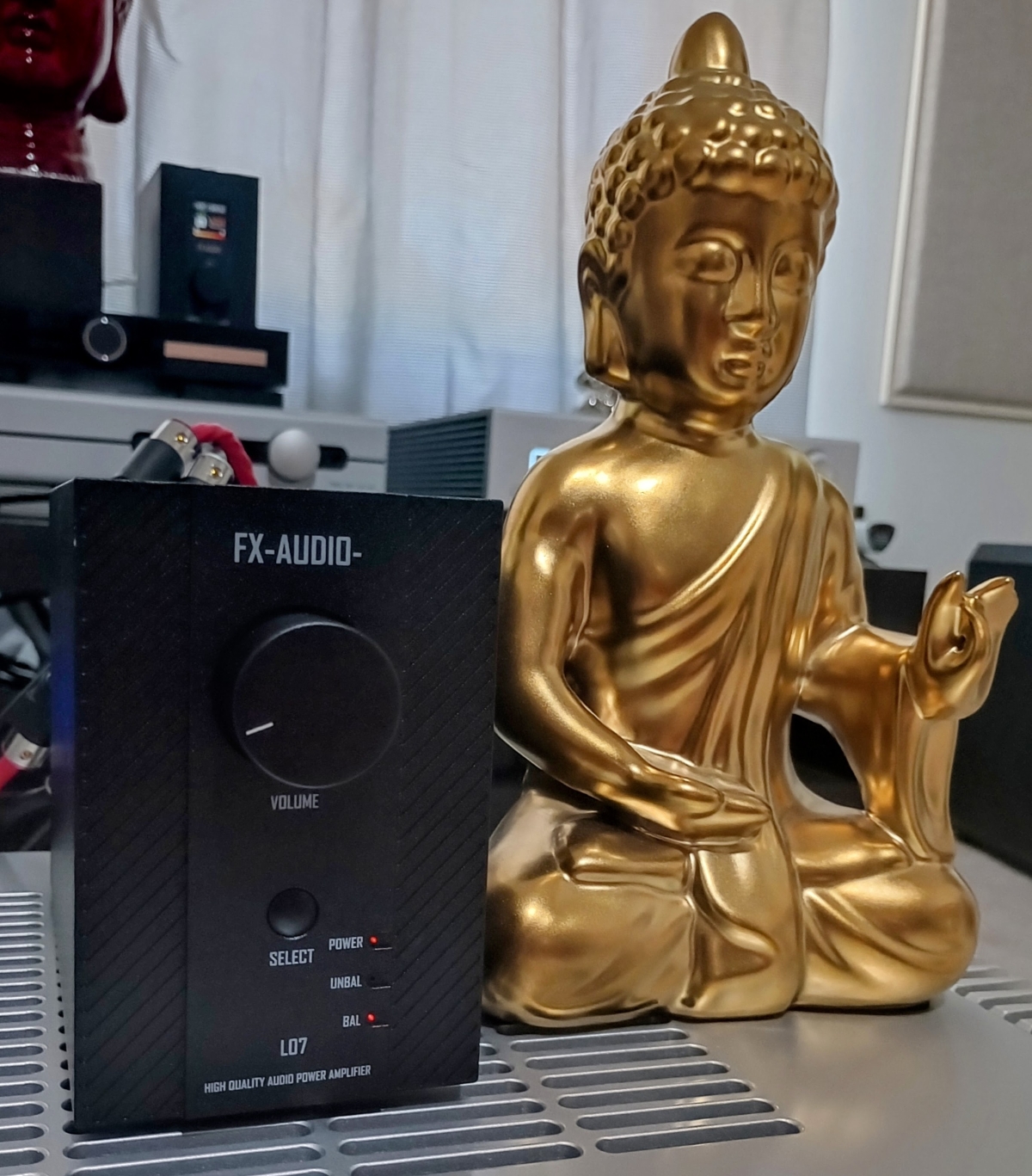
FX-Audio is in the house!
The L07 integrated amplifier's attractive enclosure is manufactured from sandblasted aluminum alloy. Its amplifier circuit features a novel Class D design that's based on the balanced architecture of the Infineon MERUS™ MA5332MS multi-chip module (MCM). Infineon's MCM chipset integrates a dual-channel pulse width modulation controller, a high-voltage gate driver, and a quad of low resistance MOSFETs. The MCM is accompanied on the internal boards by isolated independent switching power supplies, high-quality Black Diamond filter capacitors, and sophisticated over-current/over-temperature/under-voltage circuit protection with self-reset capability. The L07 amplifier outputs 100-watts into 8 ohms, doubles that power into 4 ohms, and can be switched into BTL mono operation to output 400-watts into 8 ohms. It's a very cool-running amplifier that can output up to 100-watts without heat sinks, but incorporates them nonetheless because of its extended wattage capabilities. Distortion is rated at an ultra low .008%, and its signal to noise ratio is 98 dB across a frequency range of 10 Hz to 24 kHz ± .3 dB. The compact chassis is approximately 11" x 8.75" x 7.25", and it weighs about 3.5 lbs—it's very tiny! The L07's crammed rear panel sports surprisingly nice 5-way binding posts with metal screw terminals and inputs for single-ended as well as balanced connections. The front panel features a nicely sized volume knob along with a button that allows you to select between the pair of inputs. Front-panel LEDs display power and input source, and a standard IEC power cord is included; with an MSRP of $199, the L07 is surprisingly substantial!

The FX-Audio DS07 DAC/preamplifier is more diminutive than the L07 amp, measuring approximately 5" x 3.25" x 7", and weighs even less despite featuring a similarly constructed aluminum alloy case. The DS07 is built around an ESS Sabre 9068AS DAC chipset, an XMOS U216 processor, and offers surprisingly robust support for PCM up to 768kHz, native DSD up to DSD512, and even a full MQA unfold. It also features LDAC Bluetooth 5.1 connectivity, with high resolution PCM support up to 24 bit/96 kHz. THD+N is an unbelievably low .000015%, and the DS07 features a signal-to-noise ratio of 125 dB, with a dynamic range of 120 dB. It's an unbelievably capable DAC that also includes digital volume control that will partner with just about any setup. It features digital inputs for USB, coax, and optical, and includes outputs for balanced XLR and single-ended connections. The DS07's front panel has a 1.5 inch full-color LCD display that clearly shows the input and output connections, the bit-and-sample rate of the file that's playing, and the volume level—which is controlled by either the full-sized multi-controller knob or the supplied remote. Both the multi-controller knob and remote can be used to set the DS07's menu options, which include selection of inputs and outputs, three digital filter choices, Bluetooth pair and settings, display brightness/dimming, and system reset options. The menu is intuitive with clear choices that are easy to set. A standard IEC power cord is included, along with the Bluetooth antenna; as with the L07 amplifier, the MSRP is a shockingly low $199 for such a feature-packed DAC/preamp.
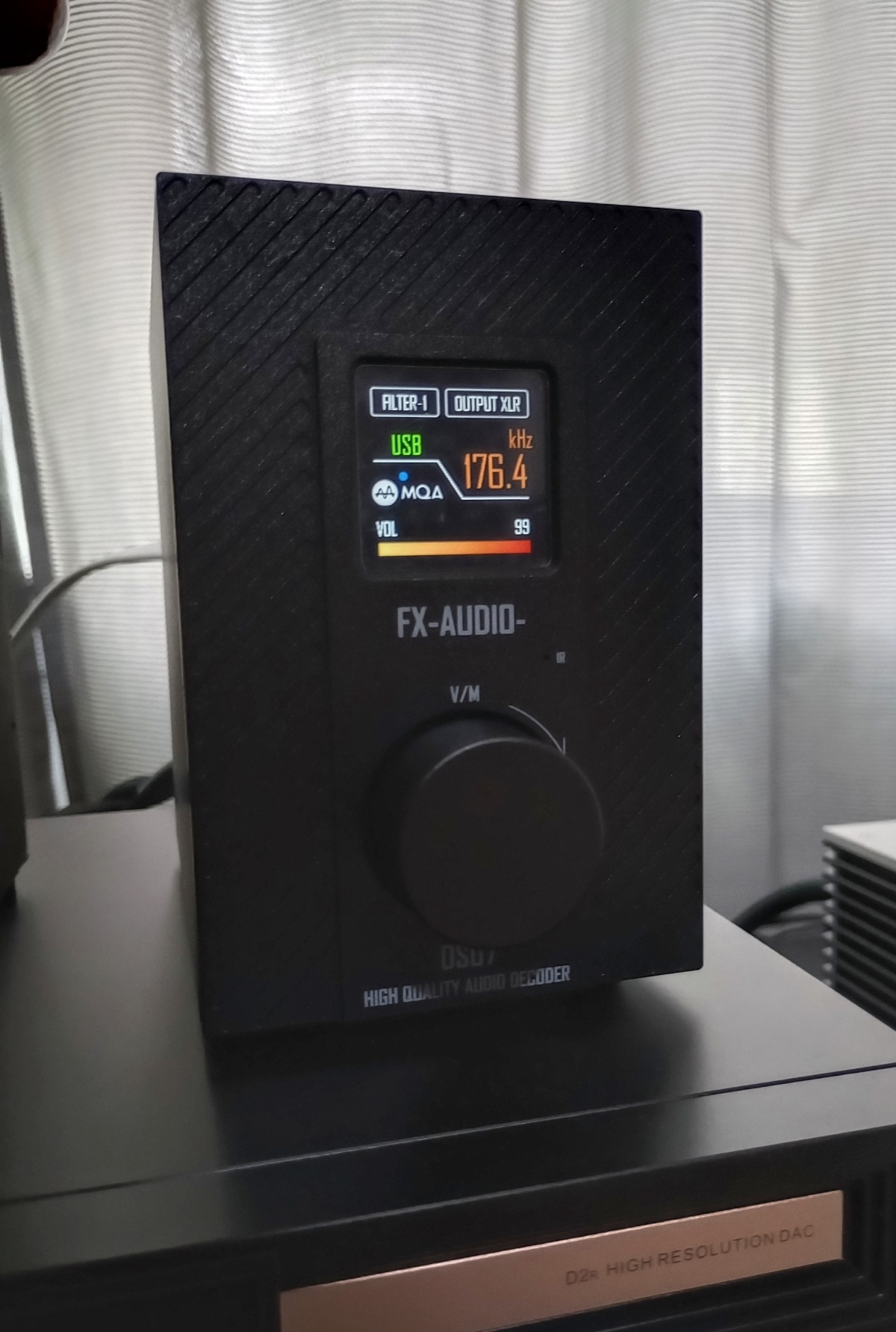
The small blue dot above the MQA logo confirms the full MQA unfold is occurring!
The package containing the FX-Audio gear arrived late in the evening one day during a period when Beth and I had our two grandkids Henry and Finneas for an entire week. After checking out its contents, I set it aside with the plan that following their departure, I'd dig into both units' operation and functionality. Unfortunately, I came down with a viral infection from Hell that dragged me down for five full days, and when I finally started feeling remotely human, I only then pulled them out to check out their capabilities. I can't understate how diminutive the pair of FX-Audio devices is compared to the gear that usually occupies my digital source system, which has a combined MSRP of somewhere in the neighborhood of $32k.
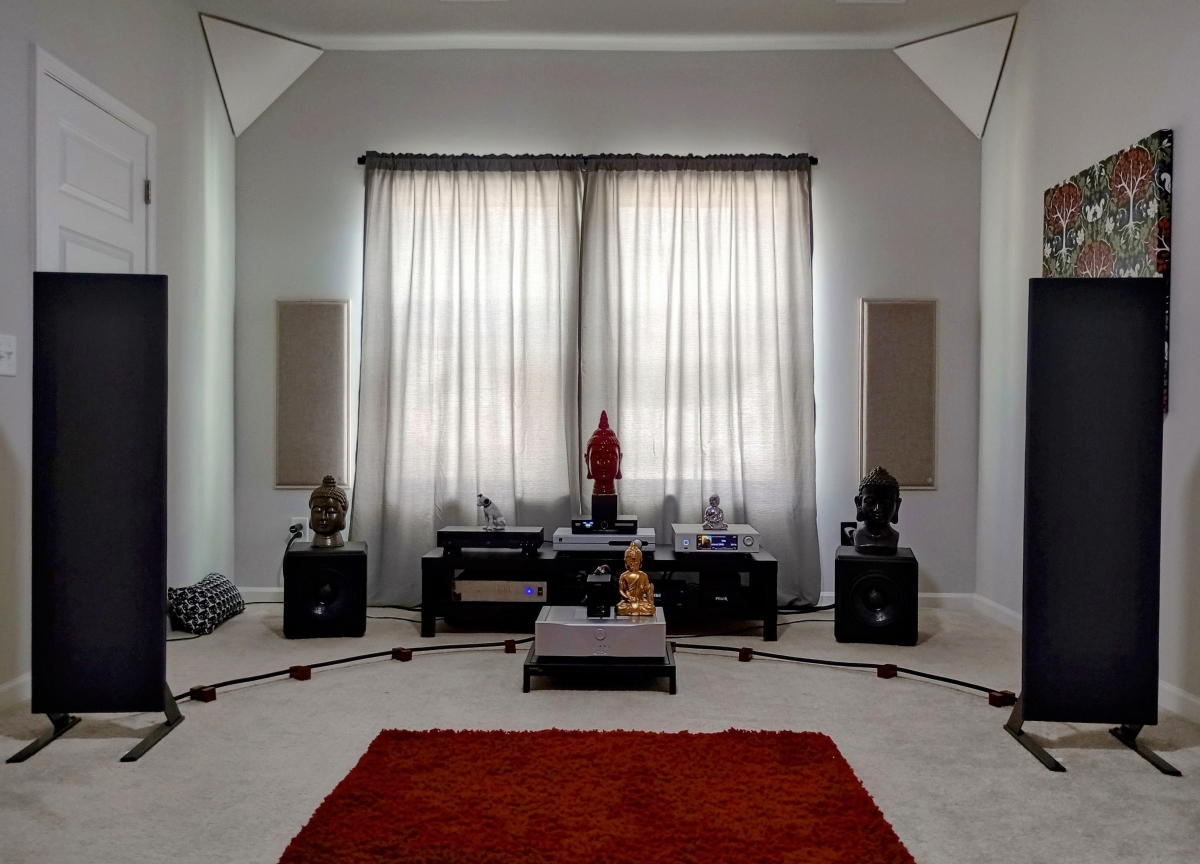
Use and listening tests
While the FX-Audio L07 and DS07 both appeared to me to be designed predominantly for desktop installations, I don't really have a dedicated desktop setup in my home that receives any consistent use. So I took the acid-test approach and inserted them both into my usual digital source system that features a pair of KLH Model Five loudspeakers that are occasionally interchanged with the Magneplanar LRS panels, a pair of Vera-Fi Audio Caldera 10 subwoofers, a Naiu Labs Ella power amplifier, PS Audio's Gain Cell preamplifier, an Aurender A1000 music server/DAC/streamer, and an S.M.S.L VMV D2R DAC. With cables and power conditioning, the system tops out at over $30k; you can click on my name in the header above to see the full contents of both audio systems in my suite of dedicated upstairs rooms. With the combined MSRP of $398 for the FX-Audio equipment, the L07 and DS07 inserted in that setup accounted for one one-hundredth of one percent of the total system value. If this equipment came from anyone other than Mark Schifter, I'd think my approach to this evaluation was completely nuts!
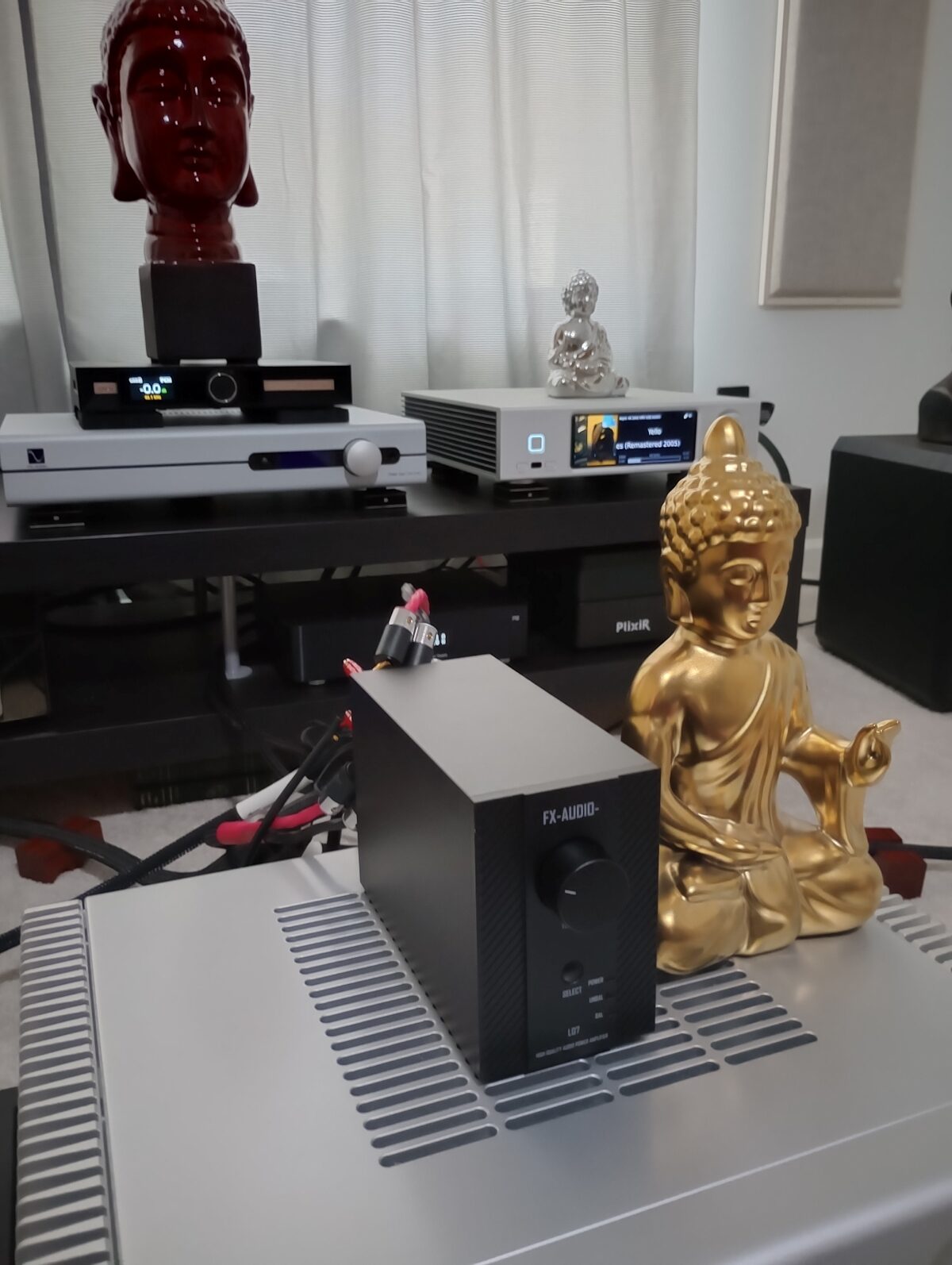
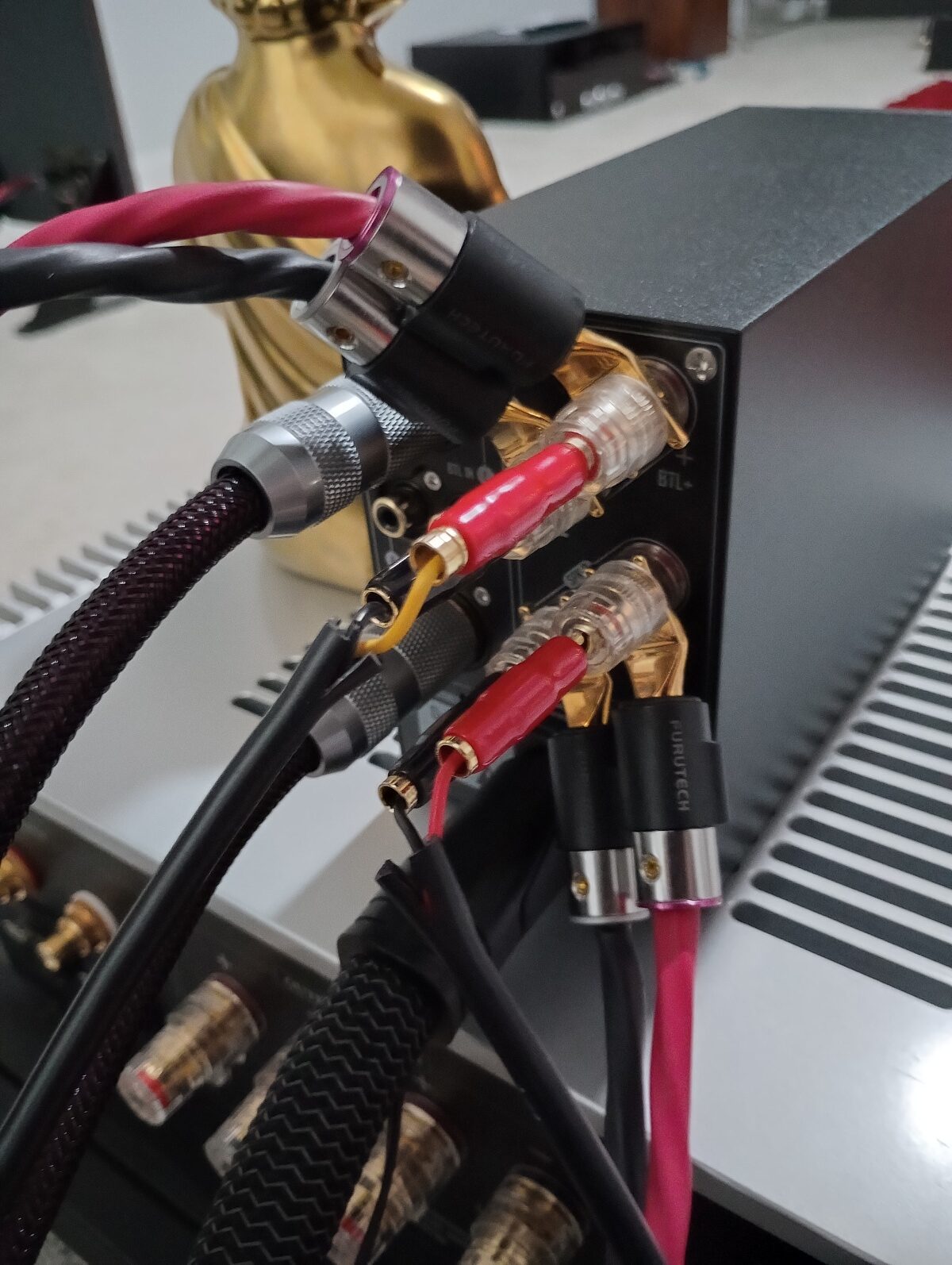
Getting many thousands of $$$ in cables connected to the L07 was challenging!
I started with just the L07 integrated amplifier to get an idea of how it sounded in the system, and just for clarity, the L07 retails for less than half the cost of any single cable that was attached to it!¹ The back panel layout is tight, but I was able to get all the oversized audiophile cables attached, and the L07 surprisingly had enough heft that it didn't tip over once everything was connected. While of late, I've been using the KLH Model Five loudspeakers in this system, since this was an acid test of sorts, I pulled the Magneplanar LRS loudspeakers out of the closet and inserted them back into the system, just to get an idea of how the FX-Audio L07 could handle a difficult-to-drive speaker load. All initial listening was done with the Aurender A1000 providing the music source, streaming directly to the S.M.S.L. VMV D2R DAC, which I'm convinced is perhaps the best affordable ($1k) DAC currently on the market.
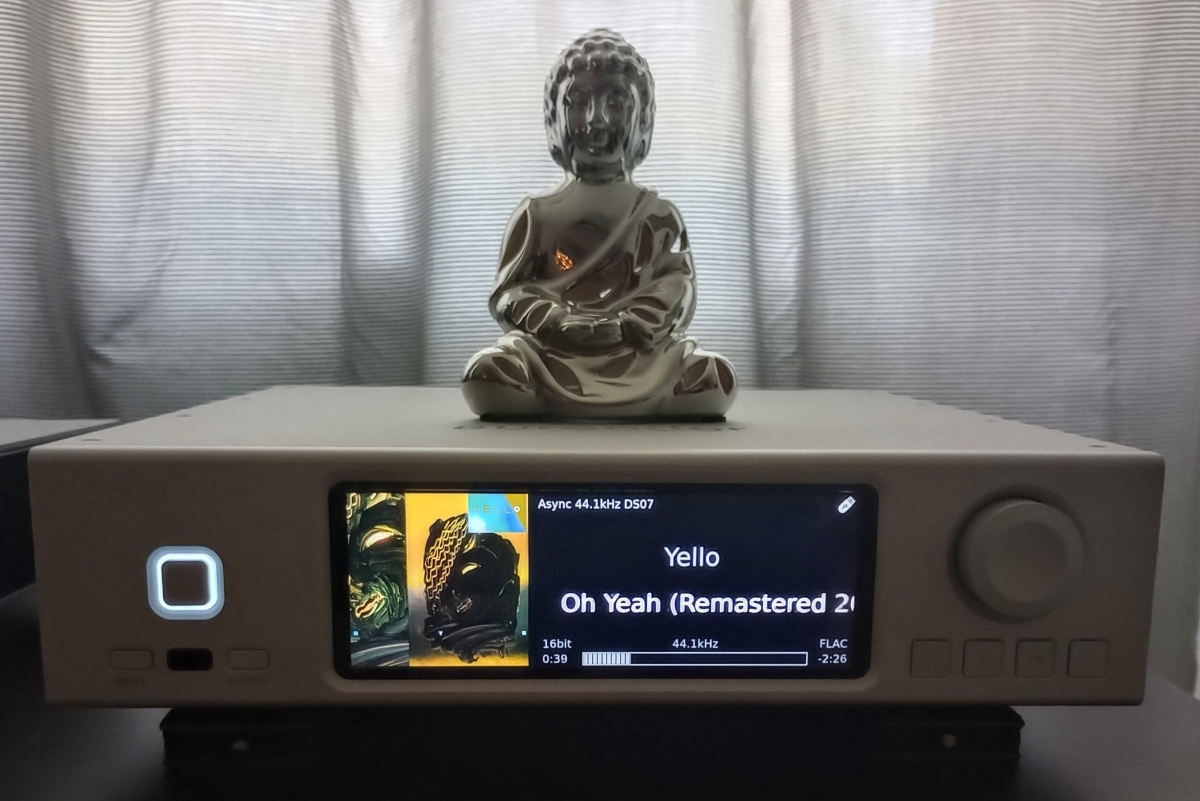
Cold and right out of the box, the L07 delivered music that was unbelievably robust, with perhaps a trace of tube-like warmth, and drove the Maggies with the kind of authority I wouldn't have imagined possible. I started out with a 24/96 PCM download of Yello's classic album Stella, ("Oh Yeah!") and with the pair of Caldera 10 subs connected via their speaker level inputs to the L07 amp as well, the system shook the house in a way that compared favorably to my normal setup! The small Maggies tend to not always respond well to music that has the kind of subterranean bass levels found on Stella, and even thought their low-frequency cutoff is around 500 Hz, that part of the spectrum can create serious issues unless the LRS are driven by an amplifier with excellent control of the bass frequencies. Not only did the L07 exert a level of control the mid-bass panels never seen at this price point, but the sound was every bit as musical as I've come to expect from them when attached to either the Naiu Labs Ella ($12k) or the PS Audio Stellar M700's ($3.5k). And this was cold, right out of the box!
A couple of years ago, I connected a pair of Mark's Vera-Link Bluetooth portable amplifiers to the LRS on a dare from Positive Feedback's Gary Beard; you can read about those experiences HERE. To my utter shock, the Vera-Link's would power the LRS to satisfying sound levels, but that demo, while impressive, in no way compared to what I was now hearing. I've always considered Bluetooth to be a superb transmission source to easily get satisfyingly good music from a phone or DAP to a pair of powered speakers, but in terms of a full-blown high resolution experience, I still consider Bluetooth to be half-baked at best. The lush and dynamic sounds I was hearing from the $199 L07 wasn't too far from that of the much more expensive amplifiers, and I'd probably be shocked if anyone could pick between them in a double blind listening test. With only an hour or so on the L07 amp, it powered the LRS/Caldera 10 combo to a level of musicality that was quite nearly indistinguishable from either the Naiu Labs or PS Audio amps, and that totally amazed me!
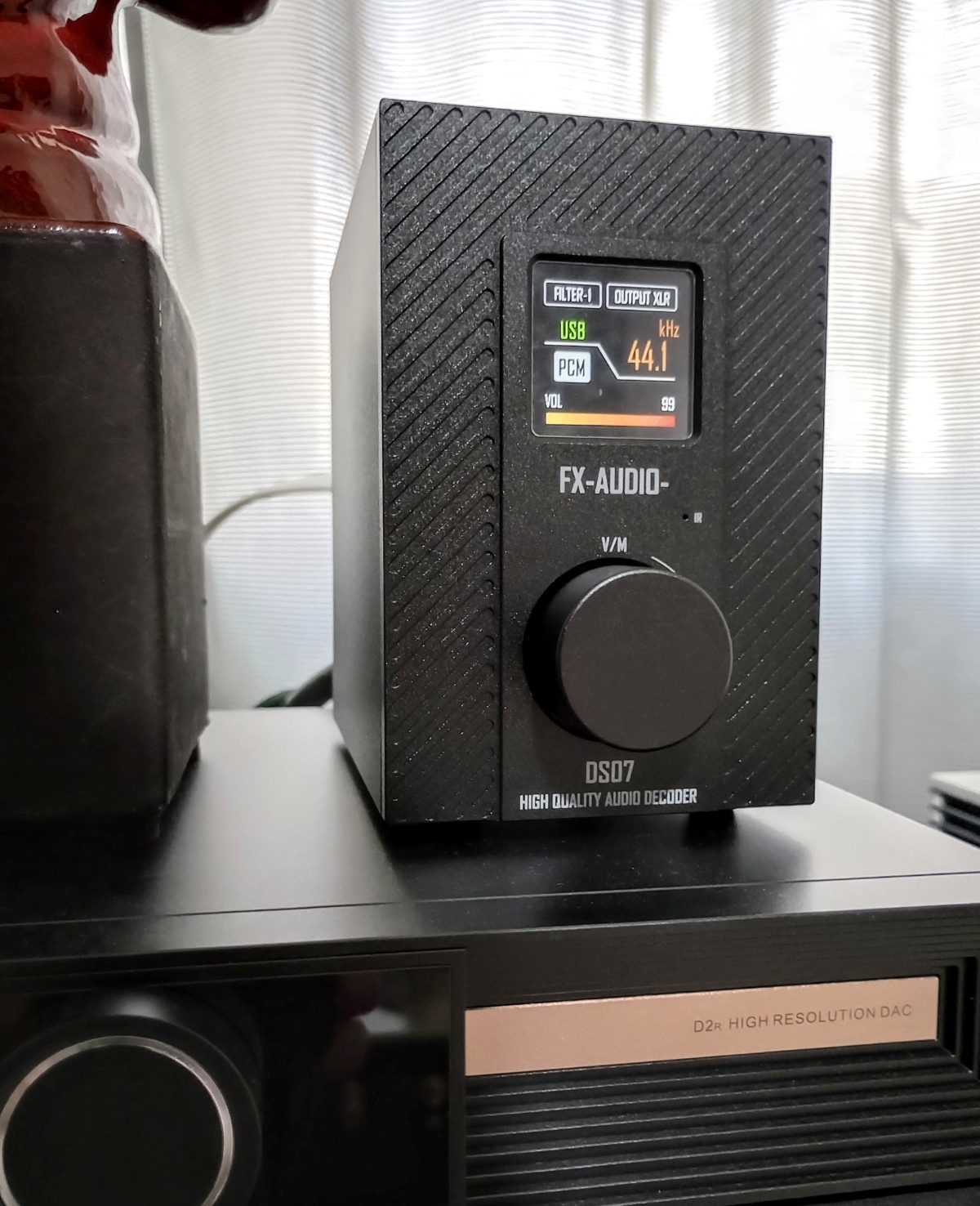
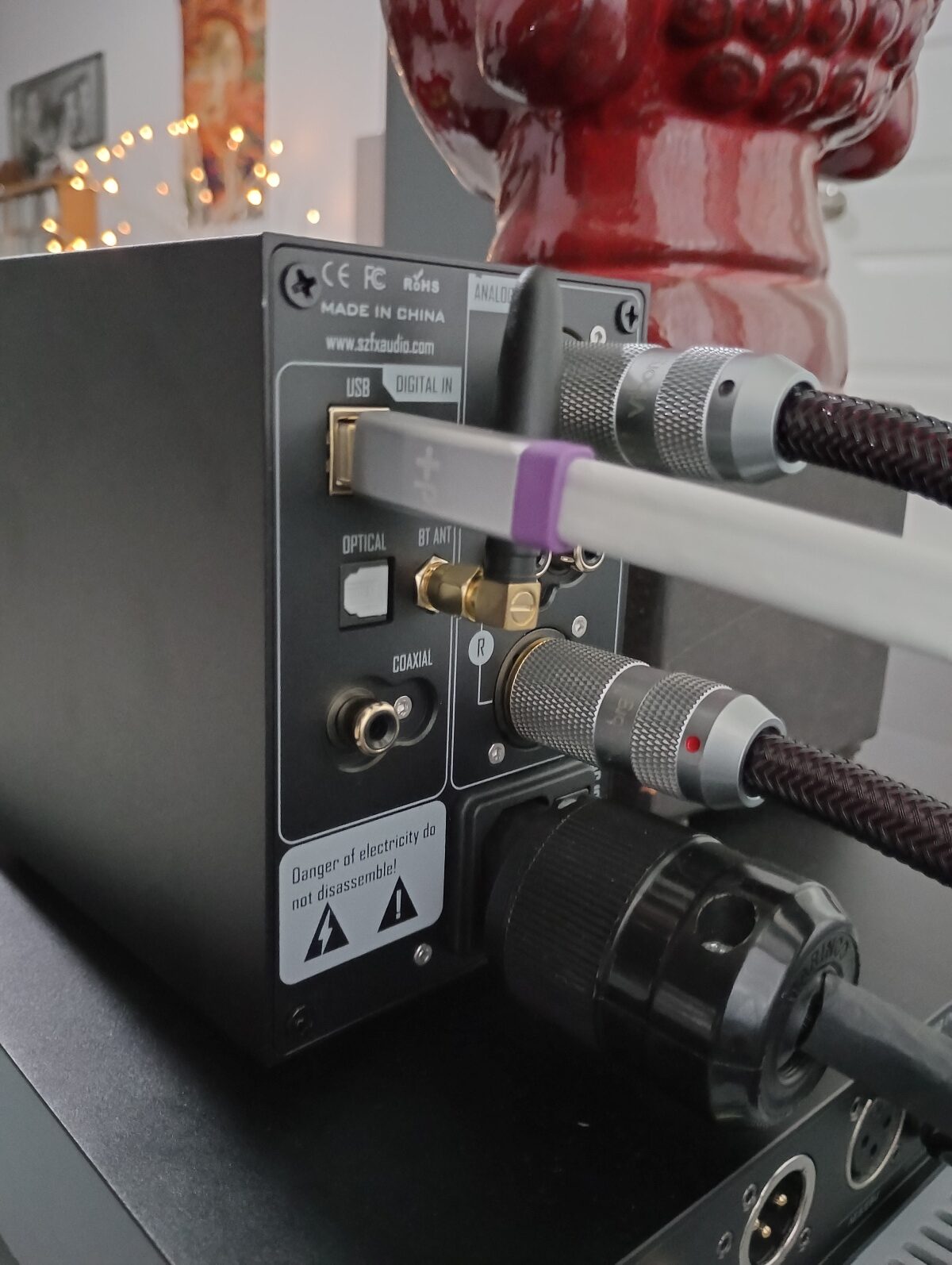
So far, I'd been listening with the S.M.S.L DAC; its ROHM chipset is one of the very best, most musical DAC chipsets out there. It was now time to plug the FX-Audio DS07 into the chain to get some bearings on whether it could offer anywhere near the same level of performance as the L07 amp. I plugged everything into the DS07, where again, each of the cables used was more than double the cost of the DS07. I then fed a USB signal from the Aurender A1000 to the DS07 and forwarded a balanced output to the L07. I not only wanted to hear how the DS07 sounded, but also wanted to confirm that it could handle its specified signal rates.
I'll be perfectly frank: I'm not a big fan of ESS Sabre delta-sigma DACs. That said, there are a number of aspects of DAC design that come into play in the overall sound quality of any given unit that can lift it above the constraints of a less-than-perfect chipset. And while I might have preferred to see an AKM, or perhaps a TI (Burr-Brown) chipset implemented in the DS07, there are plenty of high profile manufacturers at every demographic of the high end that are in love with ESS Sabre chipsets. In terms of audiophile acceptance, it's the smart choice, and depending on the talent of the designer, ESS chips can obviously provide superb results. I can easily say that despite my reservations, the ESS 9068AS implementation used in FX-Audio's DS07 is definitely among the very best I've ever heard. I didn't know what to expect, but found the sound of this new DAC to be musical and accurate with a timbre that approached that of my own rig. That said, I've always been less than thrilled about digital volume control implementations in delta-sigma DACs, and with this one, there's no clear way in the menu to defeat the volume control function. The best alternative is to simply turn the volume all the way up on the DAC, and control the output level from the L07 integrated amp. I heard no negatives in my listening through this approach.
I then played files of every bit-and-sample rate, and was easily able to confirm that the DS07 will in fact playback all files it claims to be able to, and without so much as a hiccup. A lot of great DACs emit fairly loud pops when changing files with differing bit rates, but I didn't encounter any issues of this sort with the DS07. It simply played the music, with very little if any buffering between bit-rate changes, and in combination with the L07, provided music that astonished me for a pair that retails for $398 between them. And this is within the first hour—color me totally impressed!!
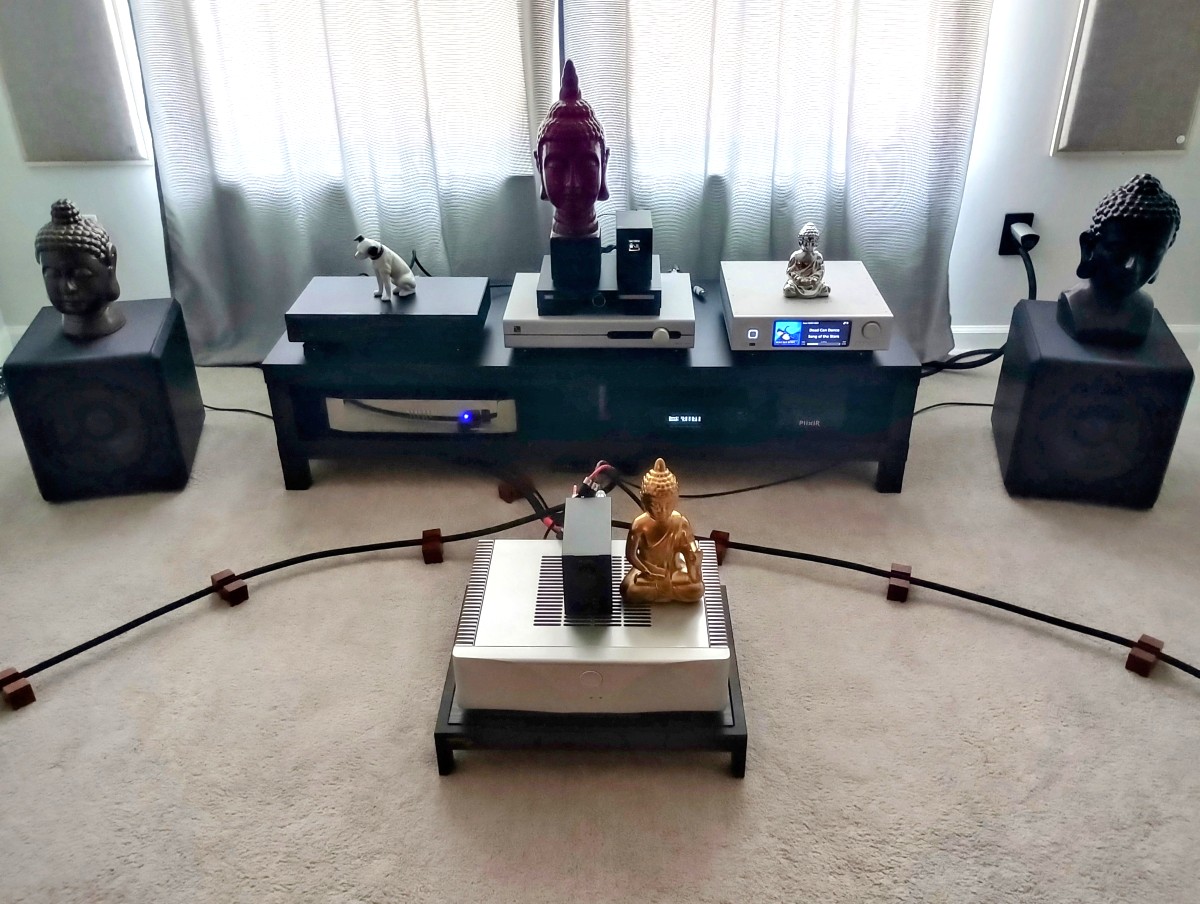
Extended listening
I left the FX-Audio equipment on overnight to burn-in a bit more before any additional extended listening. After about 16-24 hours of burn-in, I restarted my listening evaluations and was now stupefied by the quality of the sound I was hearing; the Magneplanar LRS loudspeakers now replayed the music with greater midrange clarity, a greater degree of realism, and with more well-defined bass! Again, I'd seriously dare anyone to try and pick out this equipment from double-blind listening tests with prohibitively more expensive gear—there's nothing in the sound being emitted from either piece of FX-Audio kit that doesn't equal the hallmarks of any serious audiophile gear out there! I found that truly astonishing, and while my previous session had been more of a "torture test" designed simply to test the mettle of the L07 amp and DS07 DAC with the LRS, I started playing a more typical selection of the mostly acoustic selections I tend to regularly use for equipment evaluation.
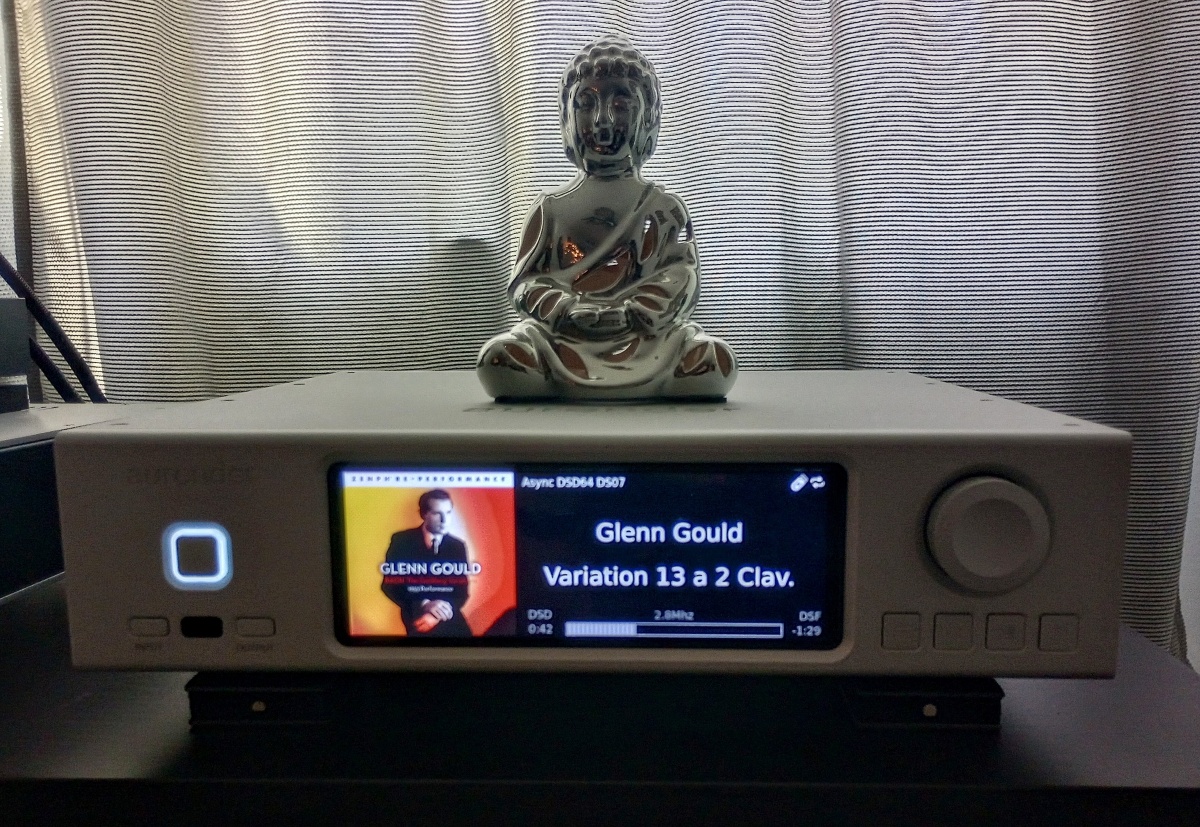
Like Glenn Gould's 1955 Bach: Goldberg Variations for solo piano, which the LRS replayed via the L07 and DS07 with a level of lyricism and realism that darn-near matched what I'm used to hearing from the $30+k system. I was particularly impressed with the DSD64 replay from the DS07, which sounded very much on par with that from the pure-native DSD playback of the S.M.S.L. VMV D2R DAC. The title track from Jennifer Warnes' Famous Blue Raincoat (a rip from Impex Records' superb 24K Gold CD) offered her crystalline voice with a level of realism and clarity that easily rivaled my usual system. Jazz pianist Cyrus Chestnut's trio date Revelation (hats off to engineer extraordinaire Jim Anderson!) is one that's always in frequent rotation, especially for equipment evaluation, and several tracks from it including "Blues for Nita," "Dilemmas," and "Cornbread Pudding" were replayed across the Magneplanar LRS with the kind of dynamics one typically doesn't associate with entry-level planar magnetics.
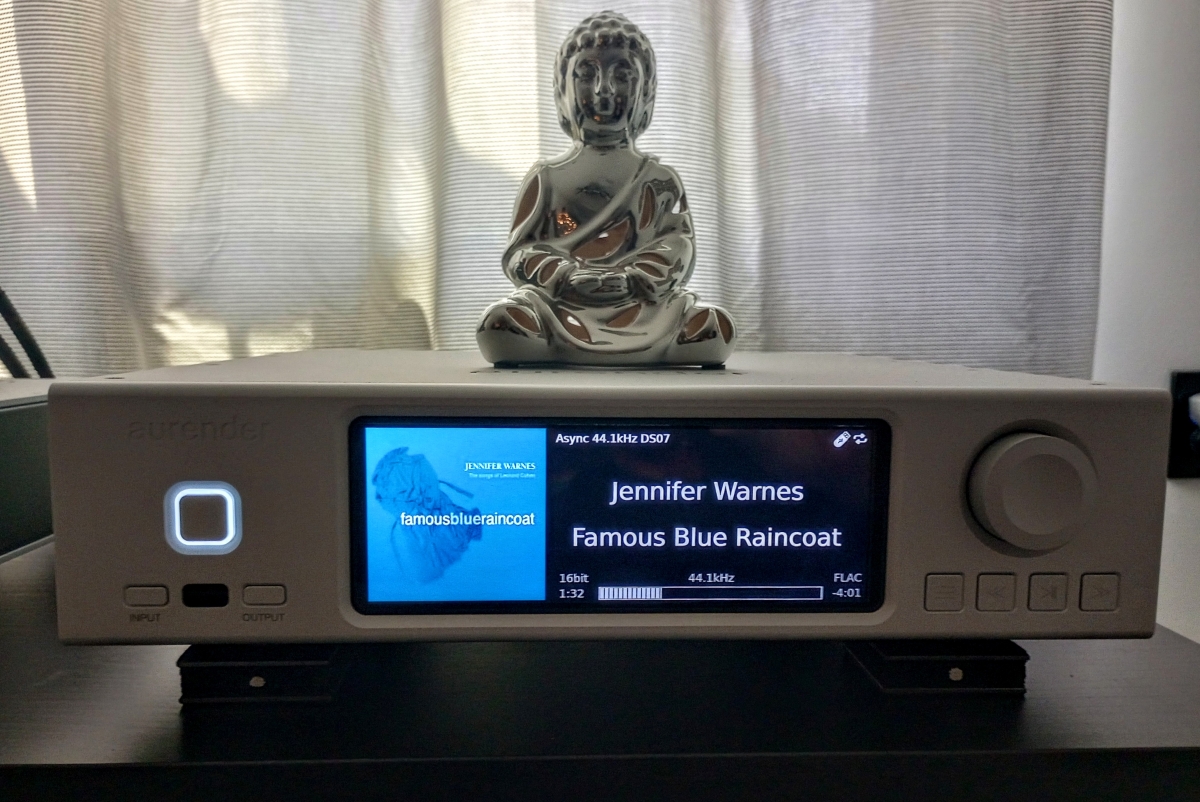
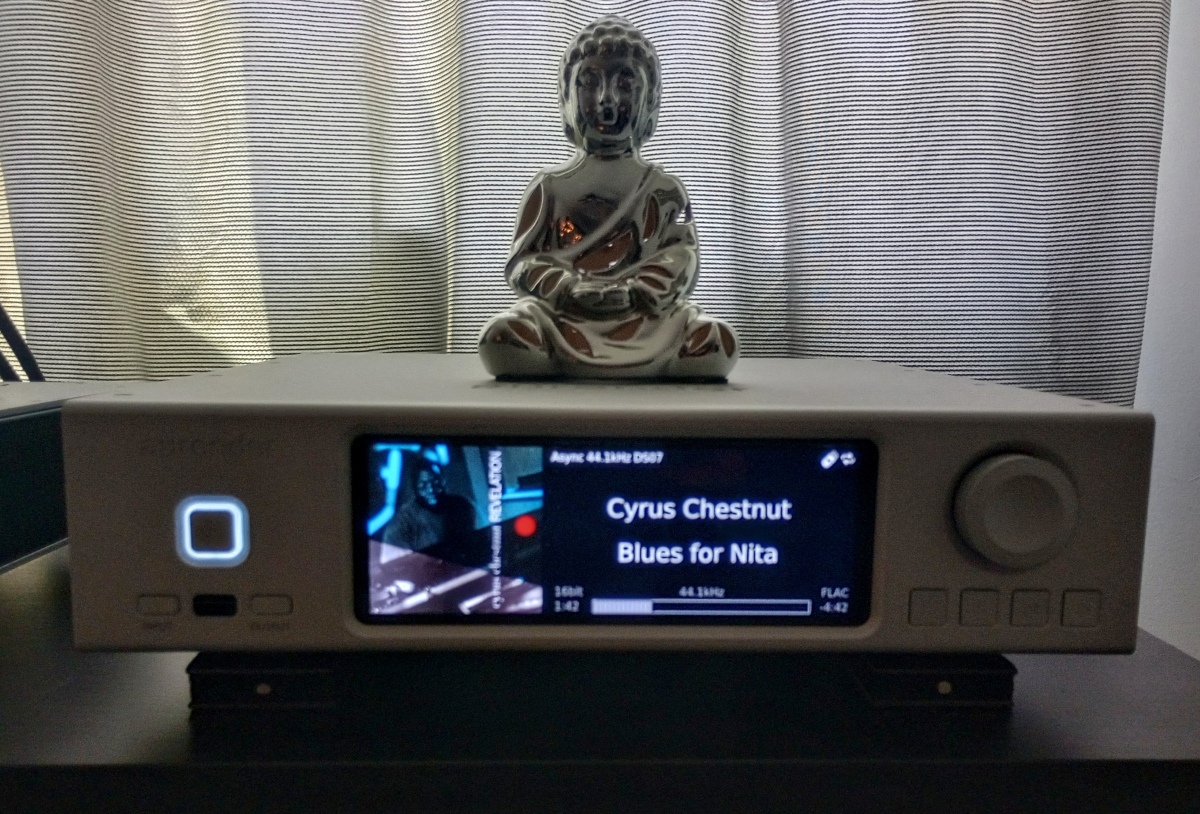
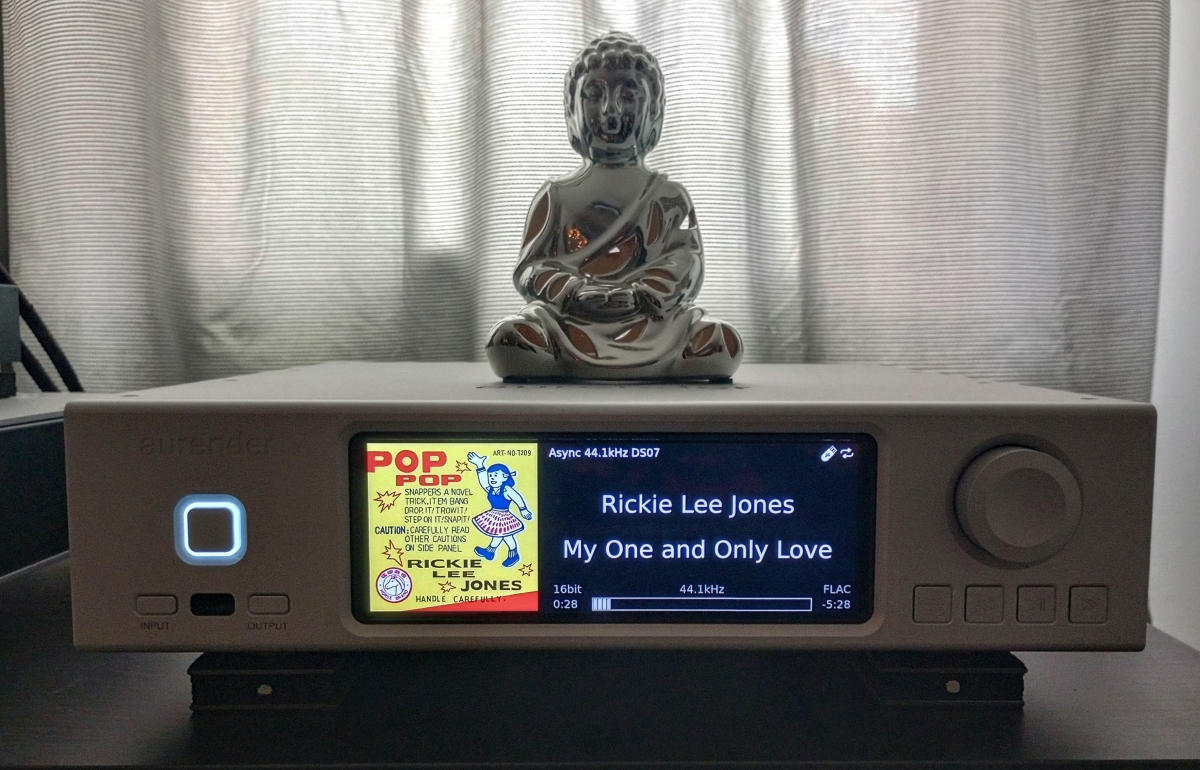
Even Rickie Lee Jones' classic Pop Pop!—a torture-test album I also regularly use—was replayed without issue via the L07/LRS combo. Jazz legend Charlie Haden plays bass on most tracks on this album, and his acoustic bass is so very well-recorded that a lot of loudspeaker/amp combinations will distort in a few places, especially the LRS, whose panels just can't seem to reproduce Haden's bass without being driven into distortion. Well, the good news is that I had to virtually crank the volume to an insane level to get the LRS to emit even the slightest trace of distortion. And with closer inspection discovered that it actually wasn't the panel that was misbehaving, but what I was hearing was the panel's metal frame vibrating in the LRS enclosure. The LRS even handled the tracks "Song of the Stars" and "Indus" from Dead Can Dance's excellent album Spiritchaser—and without emitting a peep of panel or frame noise.
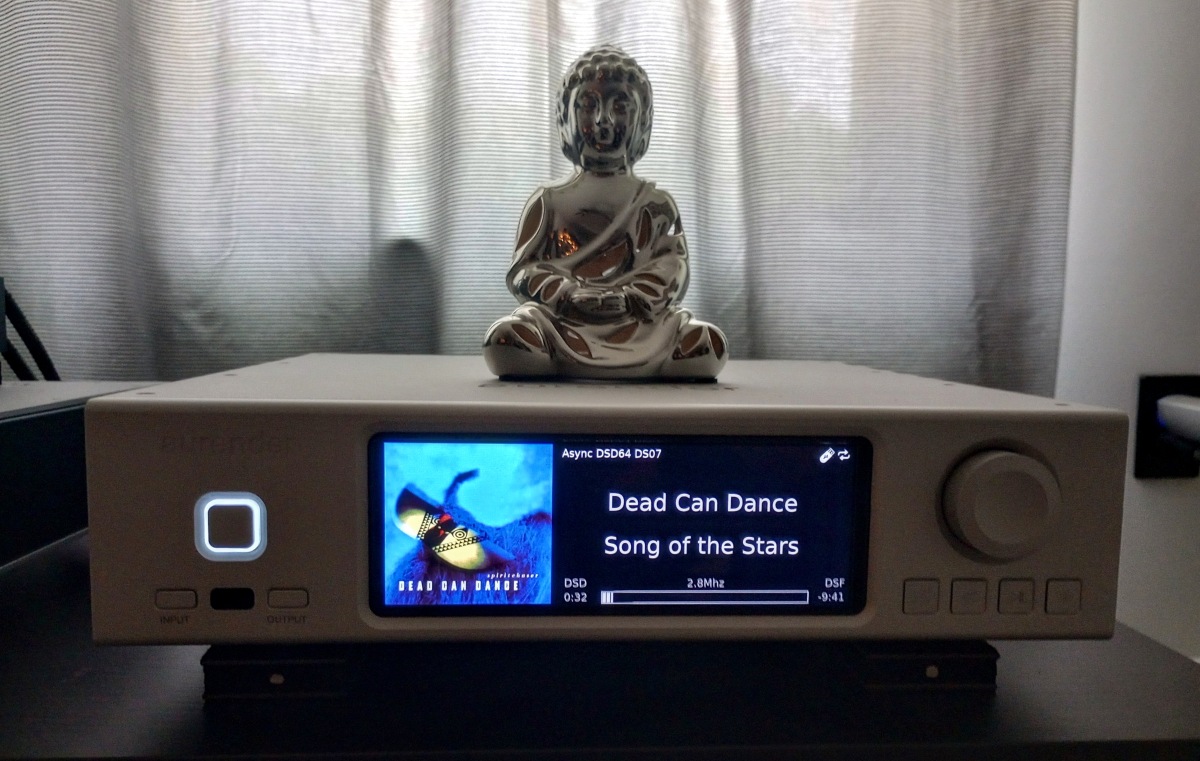

I then switched to the KLH Model Fives which have been more in my frame of reference for nine months or so. As I continued with my listening sessions, I put on some Kraftwerk from The Mix, particularly "We Are The Robots." The L07/DS07 combination shook the entire neighborhood block with this track—this kind of insanely good performance from a $400 amp/DAC pair is beyond belief! Listening continued through the very capable Model Fives with just about every torture track test of subterranean bass and massed percussion, from heady jazz from Patricia Barber's Modern Cool and Nightclub (both from Impex Records), to more heart-pounding Yello like One Second's, "La Habanera," as well as tortuous tracks from Yes, Depeche Mode, Alice In Chains, and Metallica. Totally switching gears and going more melodic, with heavy emphasis on female vocals for example, yielded even more stellar results from artists as diverse as Stacy Kent, Karrin Allyson, more Patricia Barber, more Jennifer Warnes, Holly Cole, Linda Ronstadt—you get the picture. I'm dumbfounded by the performance of this pair from FX-Audio, which can go toe-to-toe with $30+k of much higher-pedigreed electronics without so much as batting an eyelash, and at one one-hundredth the price point. It's totally insane!
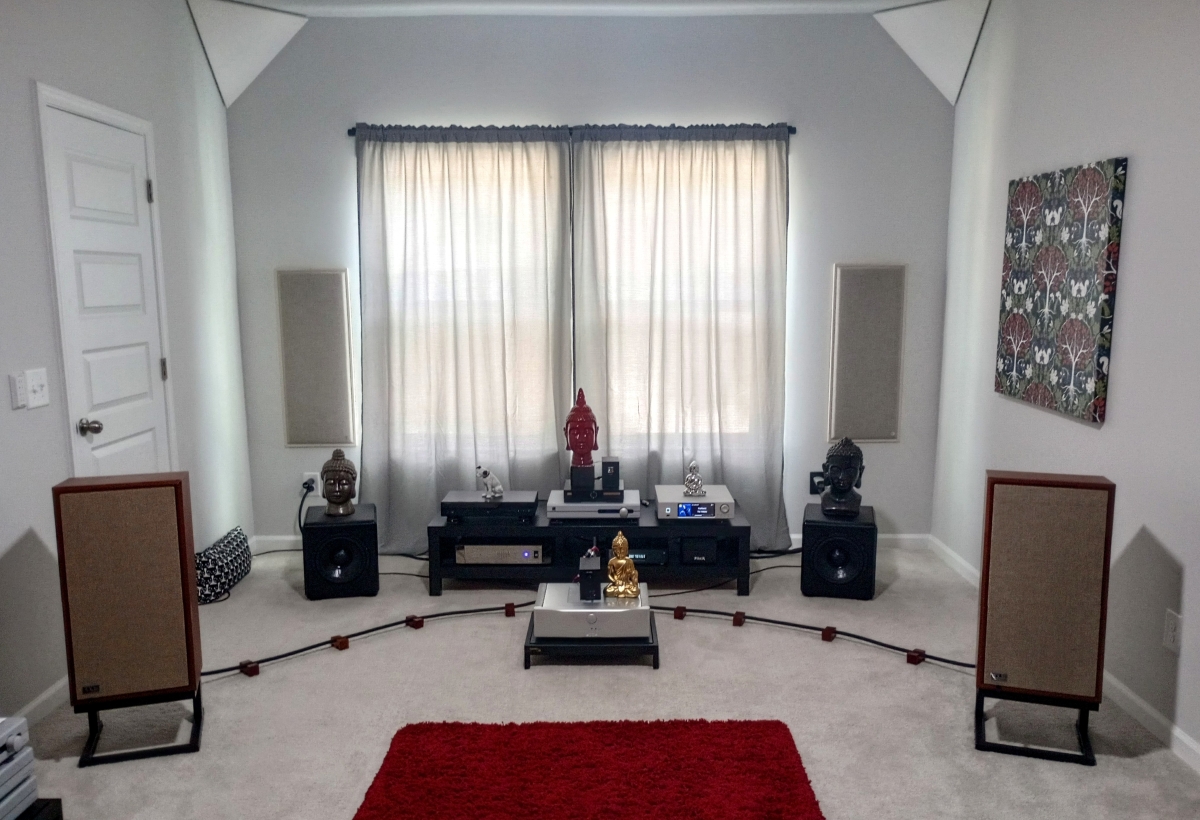
Final thoughts
My initial plan was to listen for a couple of days, then switch back to the status quo. They haven't budged from the system, and with every listen, I'm still shaking my head in disbelief! A few years ago at the Florida International Audio Expo, I was seated beside a guy who was so impressed with the demo we were hearing, he kept shouting "Stoooopid good!" over the music. That has been my resounding impression of the FX-Audio gear, where, if nothing else sums it up, "Stoooopid good!" definitely does! It's only May, but the L07 integrated amplifier and DS07 DAC/preamplifier are already on my "Best of the Year" list for Positive Feedback which will be published later in December—and there's little chance that anything can knock them off it. At the low price point of this gear, I'd be really tempted to get a second L07 amp and set the pair to BTL mono playback—but not for the additional wattage. I don't need that much juice to drive my system, and nothing I've thrown at the L07 has stressed it, had it running out of gas, or triggered the protection circuits at any insane level of playback. My reason for getting a second amp is that it would seriously declutter the rather cramped rear panel connection situation—but then, I'd have to deal with individually setting the volume on each, which seems trivial at the $199 cost of a second L07.
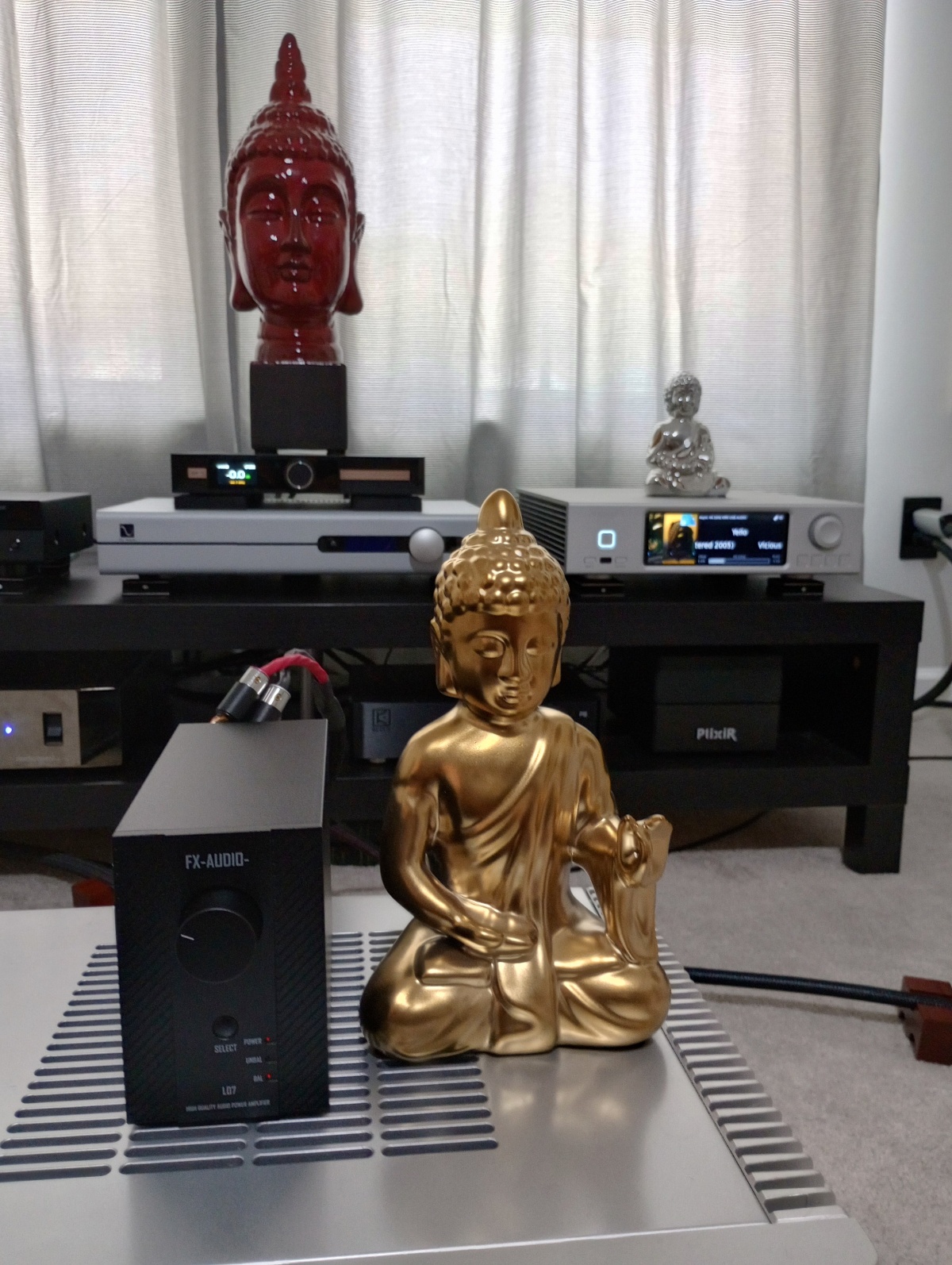
The L07 Amp shows as in-stock on Vera-Fi's website, but the DS07 DAC/Preamp and the matching R07 Headphone Amplifier are both listed as sold out (I've heard really great things about the headphone amp!). But "Sold Out" on Vera-Fi's site could be double-speak for "they're awaiting inventory" or whatever. Of course, in the current environment of tariffs and economic zaniness, who knows what will happen to the supply chain, but at the crazy good performance of the FX-Audio equipment and the ridiculously low price point of each item, it's illogical not to take a chance and order all of them as quickly as possible, at least to get in the queue when they become available again. They're really that crazy good, and trust me on this—hearing them will make you a believer!
Lots more listening to come, and I've yet to evaluate the DS07's Bluetooth operation, but I have no doubts it will be equally impressive. I'm again baffled by how Mark Schifter and Vera-Fi/FX-Audio can create devices like this that not only work effortlessly and elegantly, but will play along with much more expensive gear, all the while showing zero signs that they don't belong. Vera-Fi Audio is at the forefront of bringing low-priced equipment with high-end sound to the masses! Well done!!
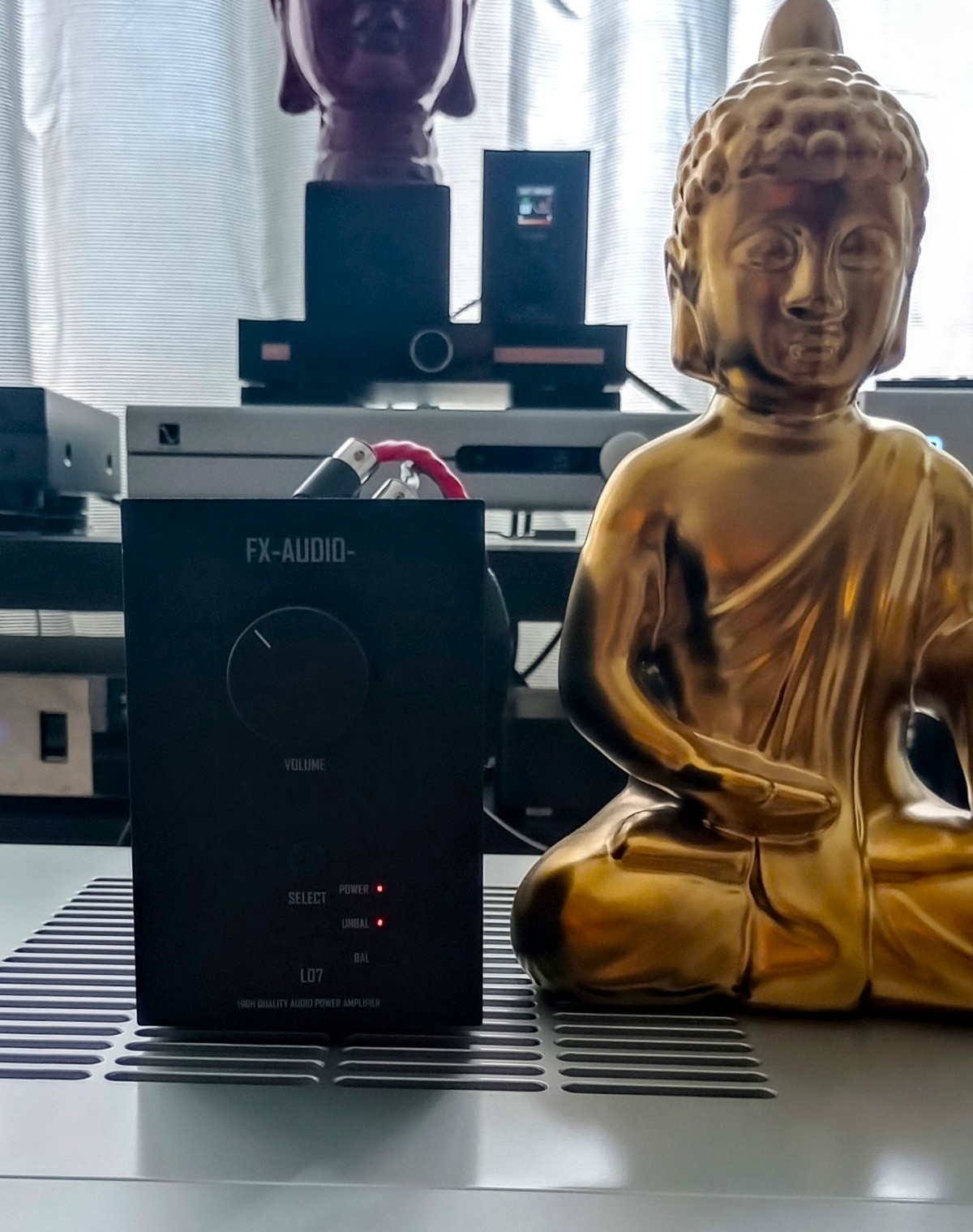
Late Follow-up:
I got a stream of late-night DMs yesterday from an audio connection inquiring as to whether I'd encountered any difficulties with the FX-Audio L07/DS07 combo using RCA inputs/outputs. My response was that I'd only used the balanced connections, but I'd give it a try this morning. As I noted in my review, the rear panel of the L07 is a bit tight, especially with bulky speaker cables with heavy Furutech spade lugs—which did require retightening after inserting the RCAs. And this is the only area where I've encountered any level of issue with the L07—using garden hose-sized cables with heavily plated connectors definitely presents a connection challenge! The bottom line is there were zero problems during playback, cranking music at every conceivable volume level without issue from either the L07 or DS07, so I ultimately have experienced no performance issues with RCA or XLR connections. As with all computer-based audio devices—especially universal disc players that can also stream to DACs and the like—there are a myriad of menu choices that govern how your music can be output or streamed, and navigating those menus to achieve the correct playback setup can be a complete and utter nightmare. In my experience, more often than not, a failure to achieve playback results from operator error and not some fault with the equipment.
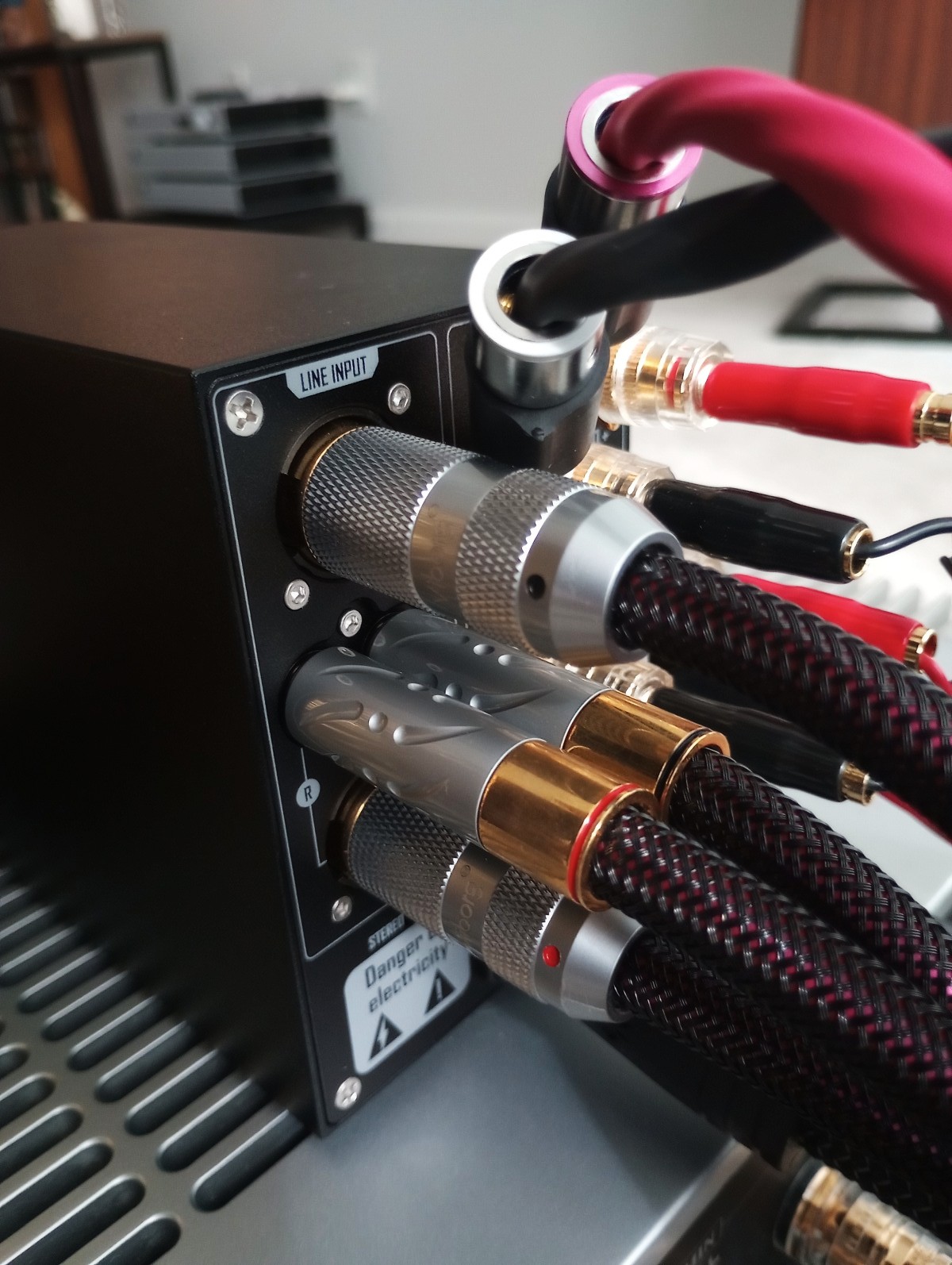
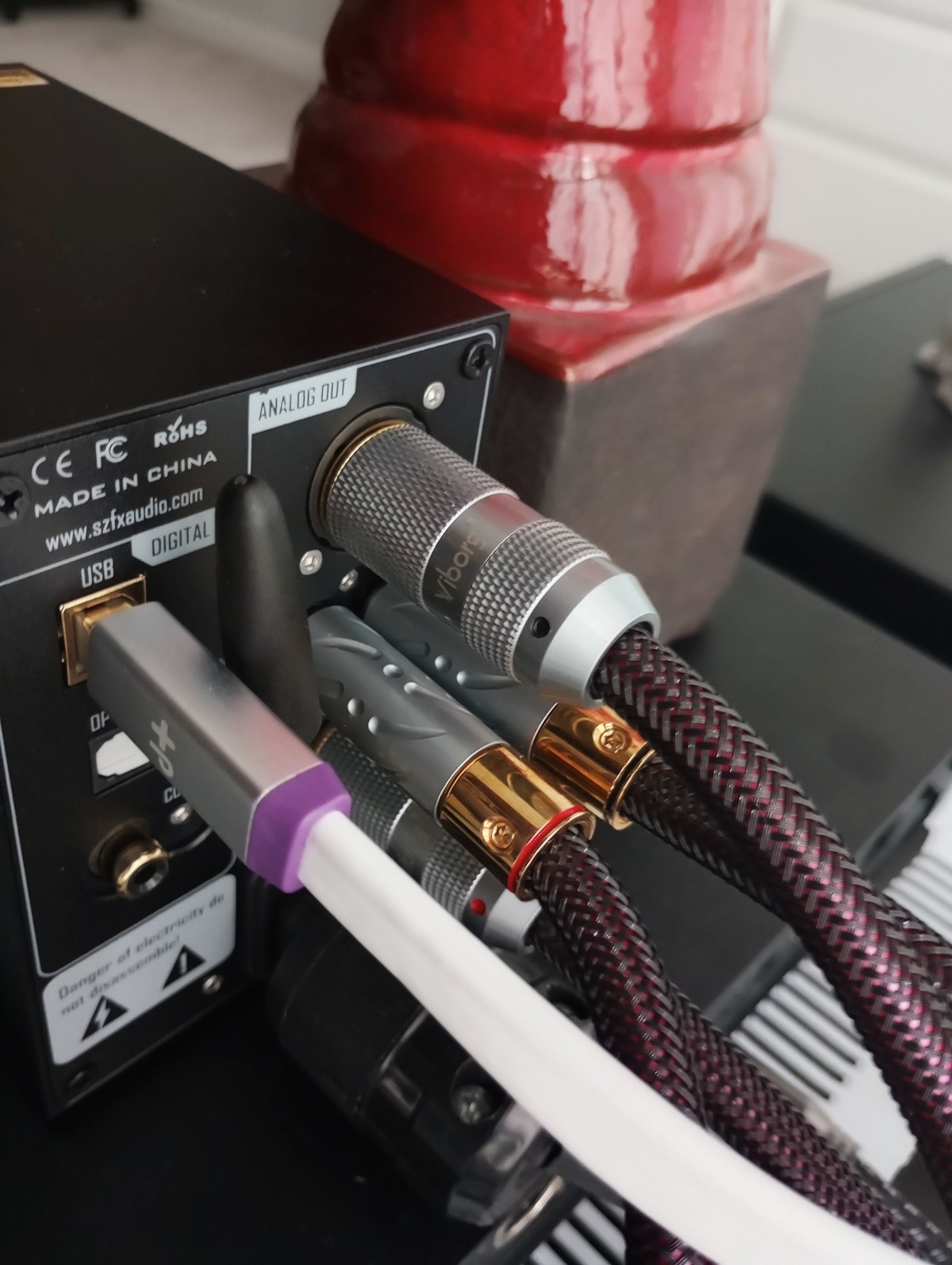
To put things here into further perspective, this is a $398 combo that plays in a $32k system as though it totally belongs, reproducing music with power, majesty, and incredible realism. That matches the level of performance of my own superb system, along with that of much more costly systems I've encountered. It is what it is—my grandson Henry wants a Lego set for his upcoming birthday that retails for $360—for $38 more, you get an audio front end and amplifier that will rock the entire block. It's a strange dichotomy on how we place value on the things that surround us, and an insane world we live in, for sure!!
L07 Integrated Amplifier
Retail: $199
DS07 DAC/Preamplifier
Retail: $199
FX-Audio
sfxaudio.com
Distributed by Vera-Fi Audio
verafiaudiollc.com
All photos courtesy of the author
¹ Actually, the home-brew cables I constructed to connect the Caldera 10 subs to the speaker level inputs are fairly inexpensive—everything else, not so much!!

